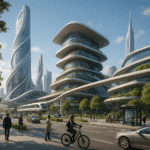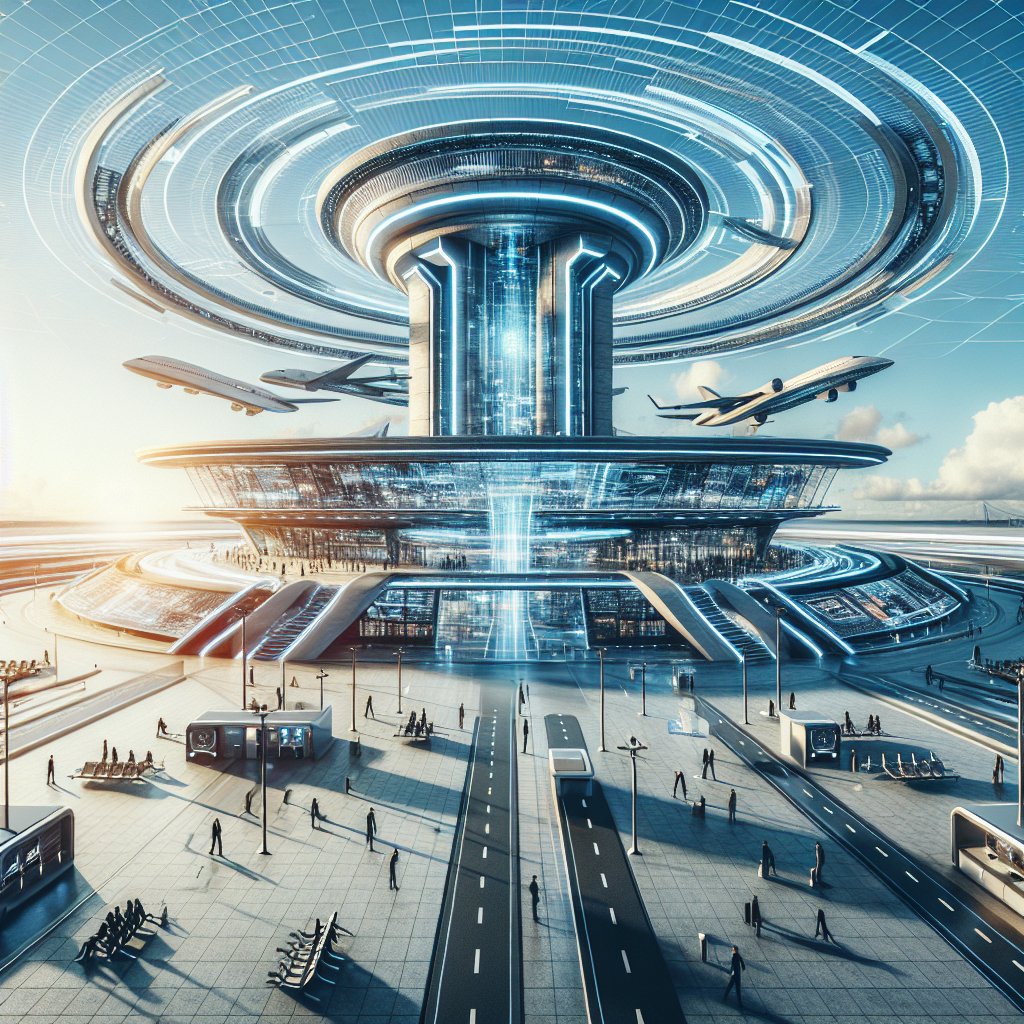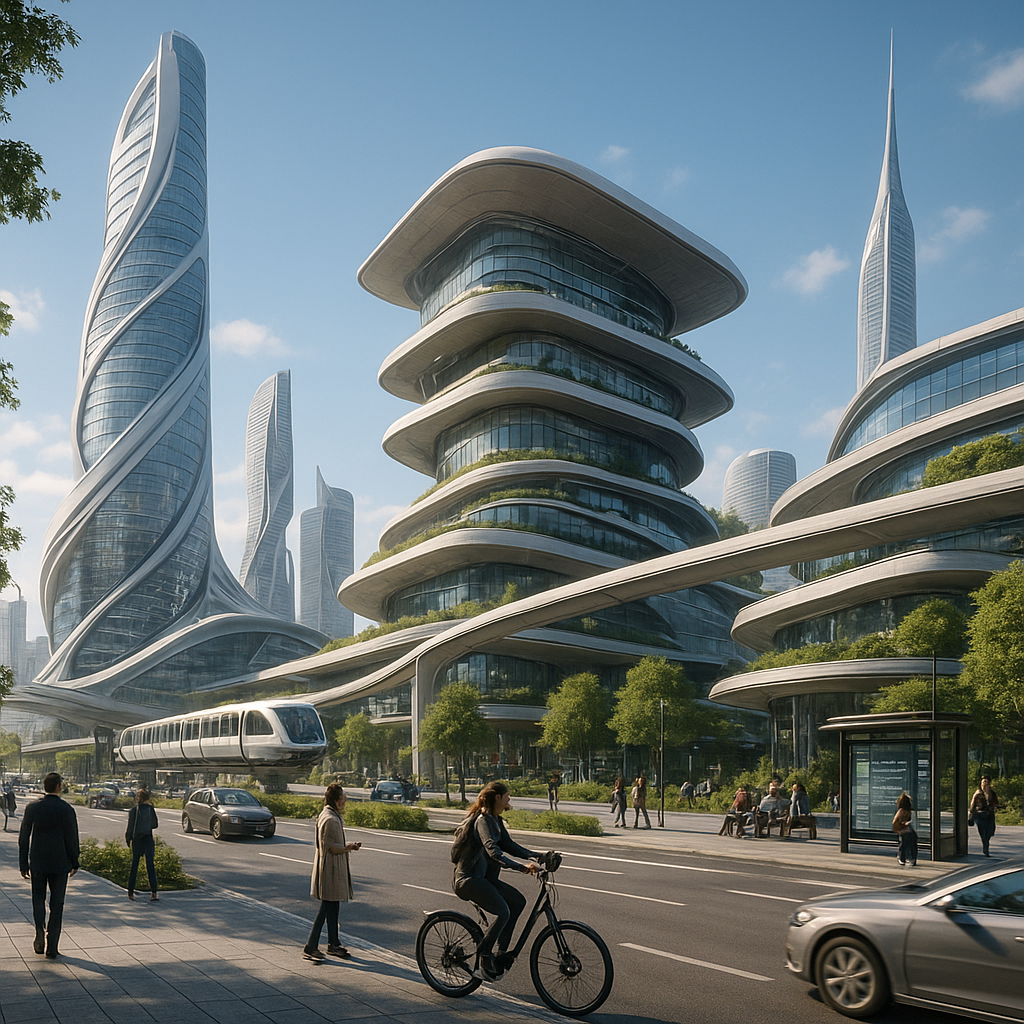As the world becomes increasingly interconnected, the future of airport design is evolving into high-tech hubs that cater to the demands of global travel. These futuristic airports are not just transit points but are transforming into destinations themselves, offering a seamless blend of technology, sustainability, and passenger experience. This article delves into the innovative trends shaping the airports of tomorrow, exploring how they are set to revolutionize the way we travel.
Technological Innovations in Airport Design
The integration of cutting-edge technology is at the forefront of futuristic airport design. As passenger numbers continue to rise, airports are leveraging technology to enhance efficiency, security, and the overall travel experience. One of the most significant advancements is the implementation of biometric systems. Facial recognition and fingerprint scanning are becoming commonplace, allowing for faster and more secure check-ins and boarding processes. These systems not only reduce wait times but also enhance security by ensuring that only verified individuals gain access to restricted areas.
Another technological innovation is the use of artificial intelligence (AI) and machine learning. AI-powered systems are being employed to manage everything from flight schedules to baggage handling. These systems can predict delays, optimize flight paths, and even assist in crowd management, ensuring a smoother flow of passengers through the airport. Additionally, AI-driven chatbots and virtual assistants are being deployed to provide real-time information and assistance to travelers, further enhancing the passenger experience.
Moreover, the rise of the Internet of Things (IoT) is transforming airports into smart environments. IoT devices are being used to monitor and manage various aspects of airport operations, from energy consumption to maintenance needs. Smart sensors can detect equipment malfunctions before they occur, reducing downtime and ensuring that facilities are always in top condition. This interconnected network of devices not only improves operational efficiency but also contributes to a more sustainable airport environment.
Sustainability and Eco-Friendly Design
As concerns about climate change and environmental impact grow, sustainability has become a key focus in the design of future airports. Architects and planners are incorporating eco-friendly features to minimize the carbon footprint of these massive structures. One of the primary strategies is the use of renewable energy sources. Solar panels, wind turbines, and geothermal systems are being integrated into airport designs to provide clean energy and reduce reliance on fossil fuels.
In addition to renewable energy, sustainable materials and construction practices are being prioritized. The use of recycled and locally sourced materials not only reduces environmental impact but also supports local economies. Green roofs and living walls are being incorporated to improve air quality and provide natural insulation, reducing the need for artificial heating and cooling systems.
Water conservation is another critical aspect of sustainable airport design. Innovative water management systems are being implemented to reduce water usage and recycle wastewater. Rainwater harvesting and greywater recycling systems are becoming standard features, ensuring that airports use water resources efficiently.
Furthermore, the concept of biophilic design is gaining traction in airport architecture. By incorporating natural elements such as plants, water features, and natural light, airports are creating environments that promote well-being and reduce stress for travelers. These biophilic elements not only enhance the aesthetic appeal of airports but also contribute to a healthier and more pleasant travel experience.
Enhancing Passenger Experience
In the quest to create high-tech hubs for global travel, enhancing the passenger experience is a top priority. Airports of the future are being designed with the traveler in mind, offering a range of amenities and services that cater to diverse needs. One of the key trends is the creation of multi-functional spaces that serve as both transit points and leisure destinations. These spaces offer a variety of dining, shopping, and entertainment options, allowing passengers to relax and enjoy their time at the airport.
Personalization is another important aspect of the passenger experience. With the help of data analytics and AI, airports are able to offer personalized services and recommendations to travelers. From tailored shopping suggestions to customized itineraries, these personalized experiences make travel more enjoyable and convenient.
Moreover, airports are increasingly focusing on accessibility and inclusivity. Design features such as barrier-free pathways, accessible restrooms, and assistive technologies ensure that all passengers, regardless of their physical abilities, can navigate the airport with ease. This commitment to inclusivity not only enhances the passenger experience but also reflects the values of a modern, forward-thinking society.
Conclusion
The future of airport design is set to revolutionize global travel, transforming airports into high-tech hubs that prioritize technology, sustainability, and passenger experience. As these innovations continue to evolve, airports will become more than just transit points; they will be destinations in their own right, offering a seamless and enjoyable travel experience for passengers from around the world. By embracing these trends, the aviation industry is poised to meet the challenges of the future and redefine the way we travel.










